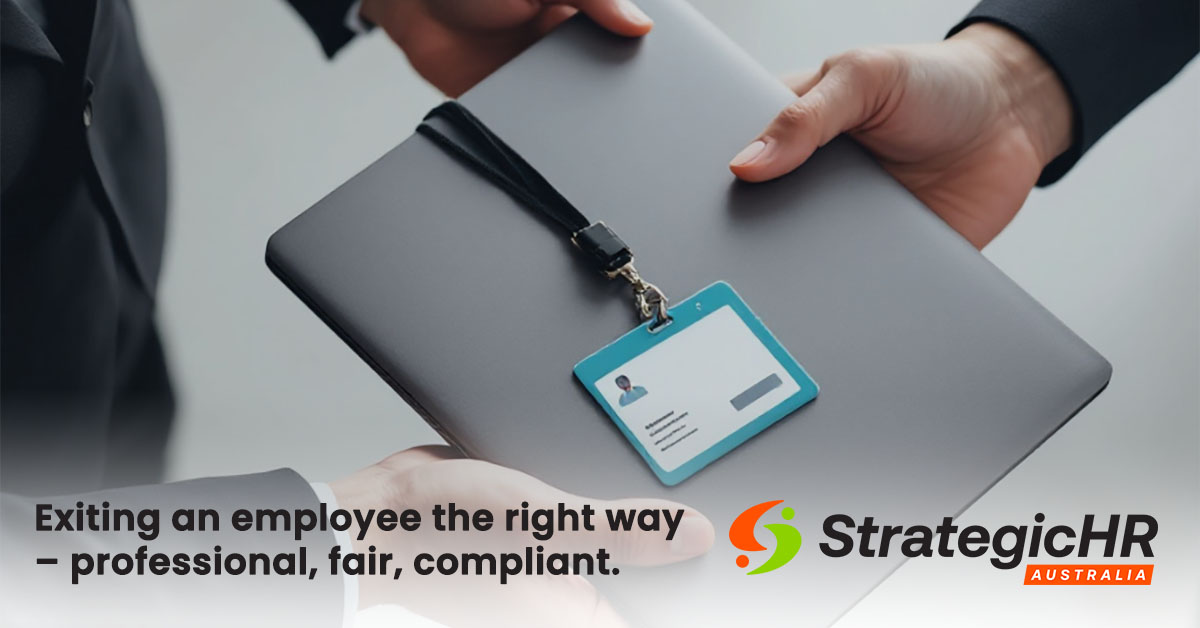Letting an employee go is never easy, but when handled correctly, it can protect your business while maintaining professionalism and respect. Here’s a quick step-by-step guide to ensure a smooth and legally sound exit process.
1. Document, Document and Document!
- Before taking any action, maintain detailed records of performance issues, informal and formal communications, warnings, and disciplinary actions.
- Solid documentation provides a clear basis for your decision and minimises legal risks.
2. Performance Support vs Serious Misconduct
- Assess whether the organisation has provided the necessary tools, resources, and support for the employee to succeed.
- Performance support should always be the first approach unless the employee has engaged in serious misconduct, warranting summary dismissal under company policy or Fair Work Commission guidelines.
3. Use a Performance Improvement Plan (PIP)
If performance issues persist despite support, a structured Performance Improvement Plan is essential.
Ensure the PIP is:
- Specific: Clearly defined goals, key performance indicators (KPIs), and benchmarks tailored to the role.
- Measurable – Progress can be tracked using quantifiable metrics such as error reduction rates, customer satisfaction scores, response times, or sales targets.
- Achievable – Goals are realistic and aligned with the employee’s role and responsibilities.
- Reasonable – Fair timeframes and resources are provided, including weekly check-ins or mentoring sessions.
- Time-bound – Set clear deadlines (e.g., improvement within 30, 60, or 90 days) with regular progress reviews.
4. Plan the Termination Meeting
If the employee fails to meet the expectations outlined in the PIP, termination may be necessary.
Practical steps to take:
- Schedule a private meeting – Maintain confidentiality
- Invite the employee formally – Allow them to bring a support person
- Have a witness present – HR or another manager
- Provide written confirmation – Issue a termination letter with final pay details
5. Secure Company Property & System Access
At the end of the termination meeting, promptly collect company assets (e.g., laptops, ID cards, documents) and revoke all system access to protect company security.
6. Communicate Internally with Sensitivity
Inform remaining staff professionally and discreetly to maintain morale. Respect the terminated employee’s privacy and avoid unnecessary details that could lead to workplace gossip.
Exiting an employee is a challenging but necessary part of business. By following these structured steps, you ensure fairness, compliance, and professionalism-safeguarding both your workplace culture and legal standing.
Need Help Managing Difficult HR Situations?
Handling employee terminations incorrectly can put your business at serious risk. Strategic HR Australia specialises in guiding businesses through complex HR challenges, ensuring compliance and best practices every step of the way.
Don’t wait until it’s too late-get the right advice now and protect your business! Contact us today.







